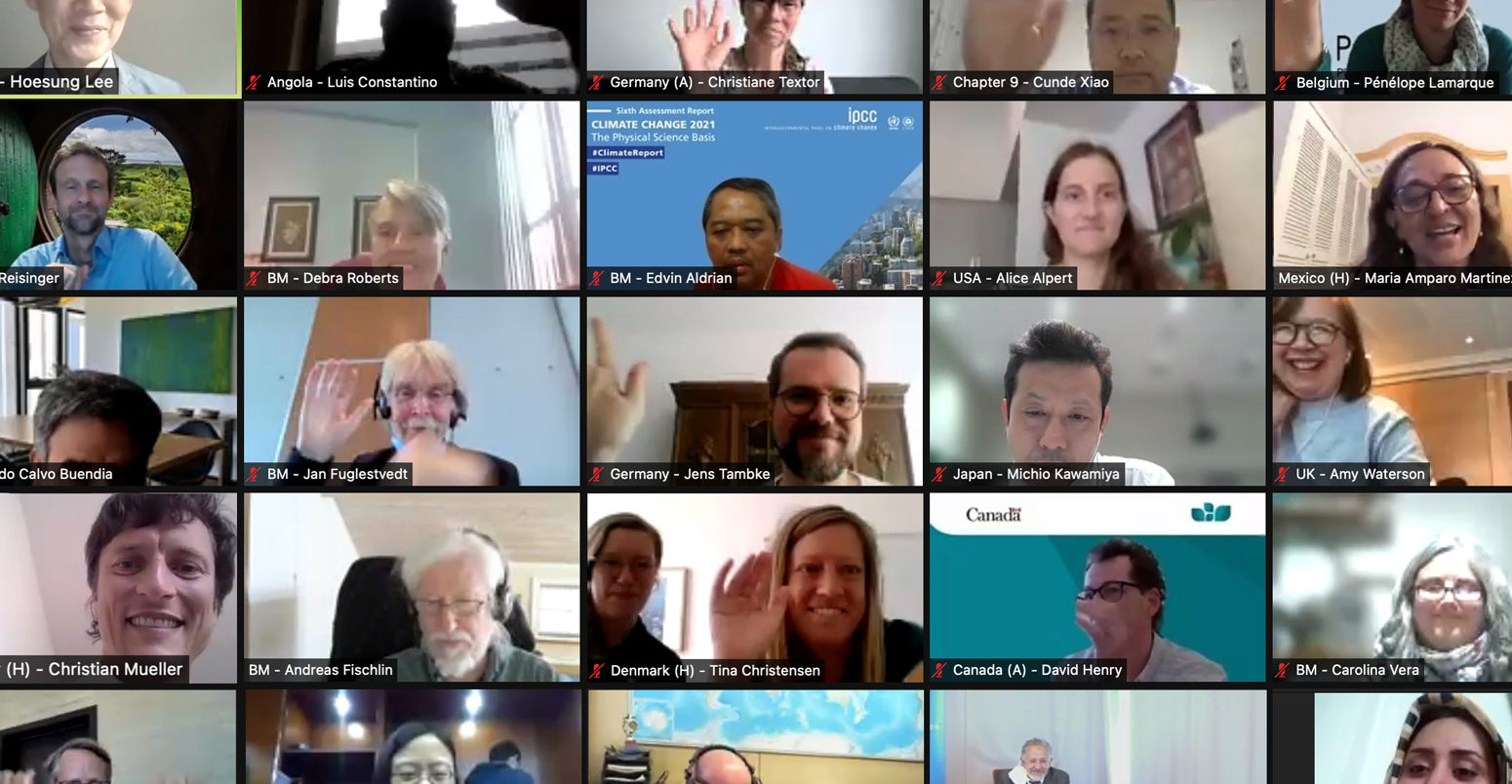
Scientists react: What are the key new insights from the IPCC’s WG1 report?
Carbon Brief Staff
08.11.21Carbon Brief Staff
11.08.2021 | 1:06pmThe new report from the UN’s Intergovernmental Panel on Climate Change (IPCC) marks the latest comprehensive effort by the world’s climate scientists to summarise the evidence underpinning their discipline.
-
WG1
- In-depth Q&A: The IPCC’s sixth assessment report on climate science
- Scientists react: What are the key new insights from the IPCC’s WG1 report? WG2
- In-depth Q&A: The IPCC’s sixth assessment on how climate change impacts the world
- Scientists react: What are the key new insights from the IPCC’s WG2 report? WG3
- In-depth Q&A: The IPCC’s sixth assessment on how to tackle climate change
- Scientists react: What are the key new insights from the IPCC’s WG3 report?
As its name implies, the sixth assessment report (AR6) – the first part of which, working group 1 (WG1), was published this week – is the latest in a series which is updated every six or seven years to reflect new evidence on climate change.
In many ways, the IPCC’s message has remained consistent since its inception, but over the years scientists have become increasingly clear about the threat posed by climate change and humanity’s role in causing it.
Since the fifth assessment report (AR5) was published in 2013-14, global warming records have been repeatedly broken and extreme weather events have been linked with greater confidence to rising temperatures.
In this article, Carbon Brief has asked an array of climate scientists, including many who contributed to the WG1 report on the “physical science basis” of climate change, what they think are its most important insights.
- Prof Govindasamy Bala: “This is the first time the IPCC has come out with an unambiguous statement that human activities are causing climate change.”
- Prof Piers Forster: “If the world can substantially reduce emissions in the 2020s and get to net-zero emissions by around 2050, temperature rise can still be limited to 1.5C, but we need to act now.”
- Dr Jessica Tierney: “Due to both an improvement in attribution science, but also the dispiriting fact that climate change has gotten so much worse, we are sure that humans have contributed to extreme events.”
- Prof Richard Allan: “There is strengthened evidence that human-caused warming of the climate is intensifying the global water cycle, including its variability and the severity of wet and dry periods.”
- Dr Amanda Maycock: “In the five illustrative scenarios assessed, we expect to reach or exceed the 1.5C warming threshold in the next 20 years. However, crucially, in the scenario with strong greenhouse gas mitigation the global temperature is likely to fall later in the century and to stabilise just below 1.5C.”
- Prof Tianjun Zhou: “For the first time, the assessment of three key aspects of the climate system response to scenarios – global mean surface temperature, ocean heat uptake and global mean sea level rise – has combined multiple lines of evidence, including the updated assessment of climate sensitivity.”
- Dr Paola Arias: “This report assesses climate impacts by region, providing regional information that can be used for climate risk assessment, which goes beyond what any previous IPCC report has done.”
- Dr Emily Shuckburgh: “This report is clear that unless there are immediate, rapid and large-scale reductions in greenhouse gas emissions, limiting warming to close to 1.5C or even 2C will be beyond reach.”
- Dr Céline Guivarch: “This report is historic, establishing human influence on the climate as a fact, bringing precise understanding of the state of the climate, and what to expect in the future, depending on our actions.”
- Prof Wen Wang: “Alongside a revised risk framing, the report adopted a Climatic Impact-Driver (CID) framework for assessing changing climate conditions in a more neutral way.”
- Maisa Rojas Corradi: “Unlike AR4 and AR5, which had dedicated paleoclimate chapters, paleo information in AR6 can be found across the report. Paleoclimate information is integrated into assessment findings as one of the “multi lines of evidence”.
- Dr Erich Fischer: “Previous IPCC reports have been criticised for being too narrowly focused on likely outcomes…Therefore, it is a major advance that IPCC AR6 specifically assessed such low-likelihood high-impact outcomes.”
- Dr Aïda Diongue-Niang: “I appreciate the fact that the report addresses the greenhouse gas emissions responsible for global warming and also air pollutant emissions, with a focus on reducing methane emissions to improve air quality and partially offset the warming induced by aerosol reduction.”
- Prof Tong Jiang: “[AR6] confirms – with scientific evidence – that we must achieve ‘net-zero’ emissions around 2050, in order to keep the climate targets made in the Paris Agreement.”
- Lincoln Muniz Alves: “I think the Interactive Atlas is a hugely valuable resource…where you can explore possible climate futures for your region at different levels of warming.”
- Dr Joeri Rogelj: There is one key take-away from the AR6 WG1 and that is: we know enough.
 Prof Govindasamy Bala
Prof Govindasamy Bala
Professor (AR6 WG1 chapter 4 lead author)
Center for Atmospheric and Oceanic Sciences at the Indian Institute of Science, Bangalore
The IPCC has once again hit on a few key messages that are sure to raise awareness about the serious nature of the climate crisis that humanity faces. To begin, this is the first time the IPCC has come out with an unambiguous statement that human activities are causing climate change.
-
WG1
- Media reaction: IPCC’s new climate science report and what it means for the world
- Analysis: What the new IPCC report says about when world may pass 1.5C and 2C
- Explainer: What the new IPCC report says about extreme weather and climate change
- IPCC: How the AR6 WG1 summary for policymakers compares to its predecessor WG3
- Analysis: What the new IPCC report says about how to limit warming to 1.5C or 2C
- Guest post: How not to interpret the emissions scenarios in the IPCC report
- Guest post: Why estimates of the ‘cost’ of climate action are overly pessimistic
There has been about 1C warming in the last 100 years and we expect another 4-5C in the next 100 years if we do nothing to address climate change. The IPCC has chosen to highlight this “unprecedented speed” of climate change in one of its key messages.
Climate, by definition, is an average of weather, and averages always hide the extreme values. Therefore, while the current global mean warming of 1C may sound harmless, its manifestation in the form of extremes is proving to be disruptive and dangerous, as witnessed by the widespread heatwaves and wildfires in recent years.
This fact appears in the IPCC’s key message on extremes, which is that human influence is making extreme climate events, including heatwaves, heavy rainfall and droughts, more frequent and severe. These disruptive events will only get worse with every bit of additional warming.
 Prof Piers Forster
Prof Piers Forster
Professor of climate physics and director (AR6 WG1 chapter 7 coordinating lead author and summary for policymakers drafting author)
Priestley International Centre for Climate at the University of Leeds
I am tired after two weeks of online plenary negotiations across time zones from my kitchen, but I think we have a great report that has a wealth of exciting new findings and messages. It’s a report that will strengthen global ambition at COP26. Over 120 national delegations participated and you could really tell that they were really looking to the report to help identify key messages for action.
My own chapter looks at climate feedbacks and, for the first time, we are able to quantify the role of clouds in amplifying climate change with a high degree of certainty. We use this information to substantially narrow the range of our future temperature projections. These projections give us much stronger confidence that the plans being pushed for in COP26 are the right ones. If the world can substantially reduce emissions in the 2020s and get to net-zero emissions by around 2050, temperature rise can still be limited to 1.5C, but we need to act now.
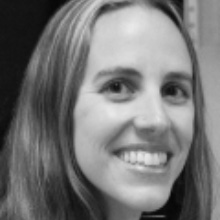 Dr Jessica Tierney
Dr Jessica Tierney
Associate professor (AR6 WG1 chapter 8 lead author)
University of Arizona
Something that is really different from the last IPCC report, AR5, is the increased confidence we have in the attribution of extreme events, such as heatwaves, floods, droughts, to human influence.
I worked on a lot of the text about drought in chapter 8, the water cycle chapter. We now know that the severity of droughts in certain regions, including western North America, the Mediterranean and South Africa, can be attributed to us.
The language in the report about heatwaves is even more confident. In the parlance of the report, it is “extremely unlikely” that some of the recent heatwaves we have seen would have occurred without human influence.
Eight years ago, the attribution of all these extreme events to human-caused climate change was less clear. Now, due to both an improvement in attribution science but also the dispiriting fact that climate change has gotten so much worse, we are sure that humans have contributed to extreme events.
 Prof Richard Allan
Prof Richard Allan
Professor of climate science (AR6 WG1 chapter 8 lead author)
University of Reading
There is strengthened evidence that human-caused warming of the climate is intensifying the global water cycle, including its variability and the severity of wet and dry periods that are affecting all regions.
The new report includes distinct chapters on water cycle changes and on weather and climatic extremes, exploiting extended observational records, advances in physical understanding and benefiting from more comprehensive computer simulations. The newly assessed science is clear that without rapid and sustained cuts in human-caused greenhouse gas emissions, water cycle extremes will continue to intensify with future increases in global surface temperature, along with more severe associated flooding and drought events.
 Dr Amanda Maycock
Dr Amanda Maycock
Associate professor in climate dynamics and director of the Institute for Atmospheric and Climate Science (AR6 WG1 chapter 4 lead author)
University of Leeds
In the three years since work on the WG1 AR6 report began, the atmospheric CO2 concentration has increased by a further 7.5 parts per million by volume (ppmv) – 2.7% higher than pre-industrial levels – and year-on-year we have observed record-breaking weather and climate extremes across the world.
It is stark to think of these changes occurring while authors have been hard at work compiling the latest scientific evidence in AR6, which now shows climate change is not something abstract that will happen a long way in the future, but that it is here with us now.
The AR6 report adopts a more comprehensive approach to projecting future warming under different emissions scenarios than was possible in previous reports, by combining information from climate models, observed climate trends and energy balance models. These more nuanced projections show that in the five illustrative scenarios assessed we expect to reach or exceed the 1.5C warming threshold in the next 20 years.
However, crucially, in the scenario with strong greenhouse gas mitigation the global temperature is likely to fall later in the century and to stabilise just below 1.5C. This is in striking contrast to scenarios with weak or no further mitigation where we can expect to see warming of 2.5-4C by the end of this century.
We also show that many changes, such as ice loss and sea level rise, are irreversible for centuries or millennia. So, even if we succeed with stabilising global temperature, we will need to adapt to ongoing changes for some time to come.
 Prof Tianjun Zhou
Prof Tianjun Zhou
Professor (AR6 WG1 chapter 4 lead author)
Chinese Academy of Sciences and University of Chinese Academy of Sciences, Beijing
To me, one key finding of the report is the new estimation of the equilibrium climate sensitivity (ECS), which is an important quantity used to estimate how the climate responds to radiative forcing. Based on multiple lines of evidence, the best estimate of ECS is 3C with a likely range of 2.5C to 4C, compared to 1.5C to 4.5C in AR5. The new estimate represents a major reduction in uncertainty.
The new estimate of ECS helps us to constrain future climate projections. For the first time, the assessment of three key aspects of the climate system response to scenarios – global mean surface temperature, ocean heat uptake and global mean sea level rise – has combined multiple lines of evidence, including the updated assessment of climate sensitivity. This has helped us to reduce the uncertainty range of warming expected under specific scenarios and provide more reliable projections that are crucial for policymaking.
 Dr Paola Arias
Dr Paola Arias
Associate professor (AR6 WG1 chapter 8 lead author)
University of Antioquia, Medellín
This report allows us to show that climate change is affecting every region on Earth and that these changes will become more severe if global temperatures continue increasing. This is very important since we are now able to link global-scale changes such as the increases in global surface temperatures with changes that translate very differently at regional scales, such as the occurrence of heatwaves, droughts, extreme precipitation and fire weather. We also have a better understanding and attribution of the human influence on the climate system, particularly for extreme weather events.
Moreover, this report assesses climate impacts by region, providing regional information that can be used for climate risk assessment, which goes beyond what any previous IPCC report has done. This will definitely help decision making in the different countries, especially in the Global South.
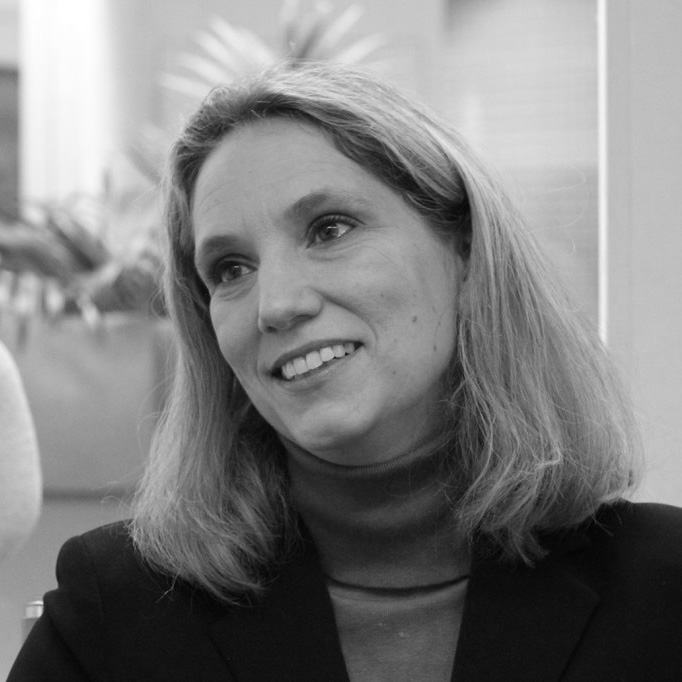 Dr Emily Shuckburgh
Dr Emily Shuckburgh
Director of Cambridge Zero
University of Cambridge
Ever more certain, ever more detailed. That’s the brief summary I would give the AR6 WG1 summary for policymakers (SPM). Once again it provides a comprehensive chronicle of extreme weather induced by climate change and the risk of catastrophic future impacts. It estimates the remaining carbon budget from 2020 for a reasonable chance (67%) of limiting warming to 1.5C is 400bn tonnes of CO2 (GtCO2). With global emissions in 2020 of 40 GtCO2, this re-emphasises that this decade is critical.
In the Decline and Fall of the Roman Empire, historian Edward Gibbon wrote that history is “little more than the register of the crimes, follies and misfortunes of mankind”. Our history is being written. For three decades the IPCC has been warning of the dangers of climate change, yet the world has not taken strong enough action to halt it. This report is clear that unless there are immediate, rapid and large-scale reductions in greenhouse gas emissions, limiting warming to close to 1.5C or even 2C will be beyond reach.
 Dr Céline Guivarch
Dr Céline Guivarch
Research director
CIRED, Ecole des Ponts ParisTech
The report states that “reaching net-zero anthropogenic CO2 emissions is a requirement to stabilise human-induced global temperature increase at any level”. This point is not totally new, as, after all, this report is not new science, but I think it is extremely important and backed by compelling evidence.
It gives an extremely clear guide for what our collective actions should aim at, together with the statement: “With every additional increment of global warming, changes in extremes continue to become larger. For example, every additional 0.5C of global warming causes clearly discernible increases in the intensity and frequency of hot extremes, including heatwaves (very likely), and heavy precipitation (high confidence), as well as agricultural and ecological droughts in some regions (high confidence)”.
This report is historic, establishing human influence on the climate as a fact, bringing precise understanding of the state of the climate, and what to expect in the future, depending on our actions. Let’s hope the resulting action will be as historic.
 Prof Wen Wang
Prof Wen Wang
Professor (AR6 WG1 chapter 12 lead author)
Hohai University, Nanjing
A risk framework was used for assessing risks from climate changes in previous IPCC assessment reports, focusing on adverse consequences for human or ecological systems. That sometimes leads to criticisms of IPCC for being too alarmist.
As the effects of climate change can be detrimental, beneficial, or inconsequential, alongside a revised risk framing, the report adopted a Climatic Impact-Driver (CID) framework for assessing changing climate conditions in a more neutral way. CIDs are physical climate system conditions (e.g, averages, and extremes) that affect society or ecosystems. Every sector can be affected by multiple CIDs, each CID affects multiple sectors and can cause different responses in different circumstances.
We believe that the CID framework can provide useful information for sectoral applications and decision making without pre-determining the effects of changing climate phenomena.
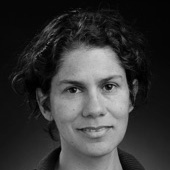 Maisa Rojas Corradi
Maisa Rojas Corradi
Director (AR6 coordinating lead author)
Center for Climate and Resilience Research, Santiago
Unlike AR4 and AR5, which had dedicated palaeoclimate chapters, paleo information in the AR6 can be found across the report. Palaeoclimate information is integrated into assessment findings as one of the “multi lines of evidence”. This AR6 approach had its risks, but, ultimately, I believe the result has been very successful. Many of the palaeo findings are the basis for the key message: “Many of the changes observed in the climate are unprecedented in thousands, if not hundreds of thousands of years…”
Furthermore, as part of the AR6, all three Working Groups have adopted a common risk framework. The WGI contribution to this risk assessment is the climatic impact drivers and the assessment of the likelihood of their changes. Both the SPM and the underlying chapters describe low-likelihood, high-impact outcomes (LLHI) as outcomes whose probability of occurrence is low but whose potential impacts on society and ecosystems are high.
Low-likelihood high impact events are important to understand and communicate as they form an integral part of a comprehensive risk assessment. The importance of communicating low-likelihood high-impact events has been strongly stated in many government review comments, they are introduced in detail in chapter 1 and further developed in chapter 12, and are also an important aspect of the ‘handshake’ with WG2.
 Dr Erich Fischer
Dr Erich Fischer
Senior scientist and lecturer (AR6 WG1 lead author)
ETH Zurich
Previous IPCC reports have been criticized for being too narrowly focused on likely outcomes. We would never do this when buying property insurance – where we are interested in the 1%, 0.1% or even lower likelihood outcomes that cause the largest damage.
Therefore, it is a major advance that IPCC AR6 specifically assessed such low-likelihood high-impact outcomes. This includes the occurrence of unprecedented or novel combinations of compound events, or levels of global warming that substantially exceed the very likely range, e.g. 2.5C global warming in an emission scenario expected to limit warming to less than 2C.
Other outcomes such as ice sheet instability processes leading to potentially amplified sea level rise are associated with deep uncertainty and their likelihood is not well known. Nevertheless, these outcomes are an integral part of risk assessment given their potential high impacts on society and ecosystems.
 Dr Aïda Diongue-Niang
Dr Aïda Diongue-Niang
Researcher
Global Green Growth Institute, Senegal
I appreciate the fact that the report addresses the greenhouse gas emissions responsible for global warming and also air pollutant emissions, with a focus on reducing methane emissions to improve air quality and partially offset the warming induced by aerosol reduction.
I see this as an important synergy, especially in developing countries which today have low greenhouse gas emissions but high rates of urbanisation and population growth and significant air quality problems.
 Prof Tong Jiang
Prof Tong Jiang
Dean at the Institute for Disaster Risk Management (WG2 review editor)
Nanjing University of Information Science and Technology
The new report adopts the latest “shared socio-economic pathway”, or “SSP” scenarios. It also forms a closed loop on climate science, covering the science, impacts, vulnerability and mitigation of climate change.
Furthermore, AR6 carries out comprehensive risk analysis on compound extreme weather events. This represents a major step forward since the AR5 report, which mainly focused on single extreme events and their attribution, leaving the evolution and characteristics of compound extreme weather events in the mist.
The new report also brings up the discussion on “tipping points” in the climate system. We have come to the understanding that despite a small probability, once the tipping points are breached, there could be disruptive consequences.
Last but not least, it further confirms – with scientific evidence – that we must achieve ‘net-zero’ emissions around 2050, in order to keep the climate targets made in the Paris Agreement.
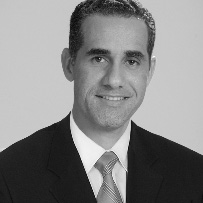 Lincoln Muniz Alves
Lincoln Muniz Alves
Research scientist (WG1 Atlas lead author)
Instituto Nacional de Pesquisas Espaciais, São Paulo
The recent climate extremes in many parts of the world underscore the need for robust climate policy. So, I think the Interactive Atlas is a hugely valuable resource for that where you can explore possible climate futures for your region at different levels of warming.
 Dr Joeri Rogelj
Dr Joeri Rogelj
Director of research (AR6 WG1 chapter 5 lead author)
Grantham Institute for Climate Change, Imperial College London
There is one key take-away from the AR6 WG1 and that is: we know enough.
In the strongest terms ever, the IPCC establishes that global temperature has increased, oceans have warmed, glaciers are retreating, extreme weather is getting more intense and global sea level is rising. Human activity is behind this – unequivocally. These changes are exceptional and unprecedented in human history, many are irreversible on human timescales.
The latest WG1 report also tells us that we understand all the puzzle pieces we need to halt this warming: achieving net-zero CO2 stabilises warming; net-zero greenhouse gas emissions results in a peak followed by a gradual reversal of it; and estimates of the remaining carbon budget are clear, robust, and so small they leave no time to loiter.
We know enough, we have enough science. Let’s get on with working towards addressing this challenge that will define humanity over the next decades and centuries.
-
Scientists react: What are the key new insights from the IPCC’s WG1 report?

